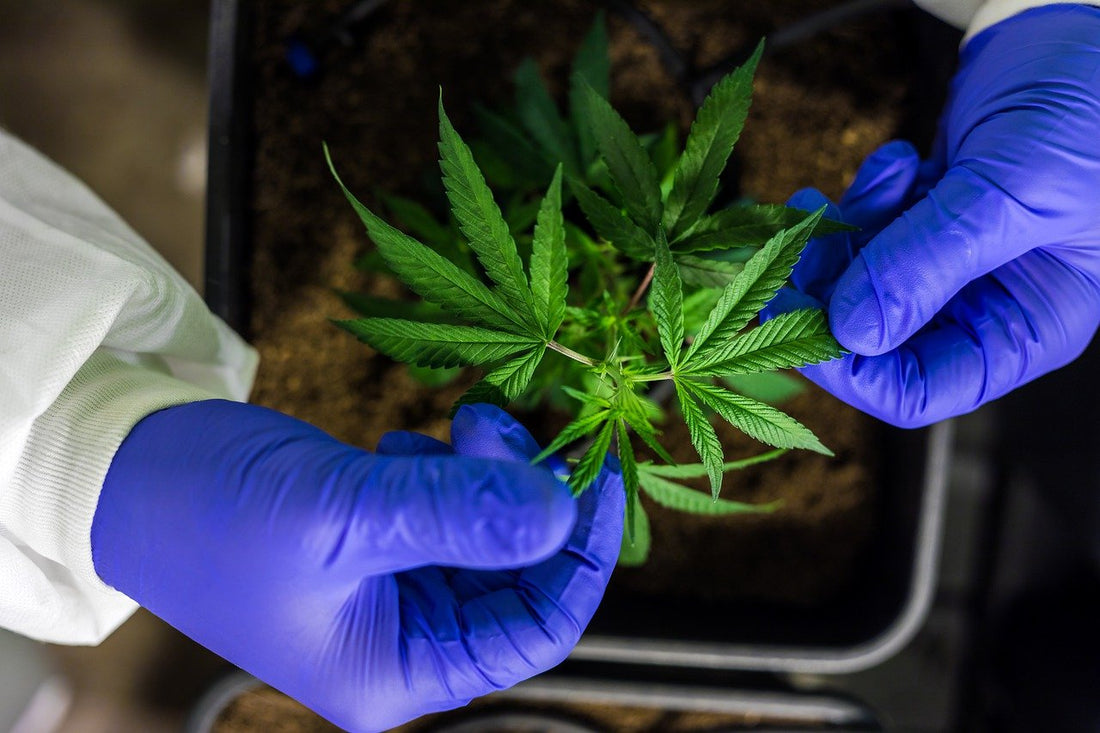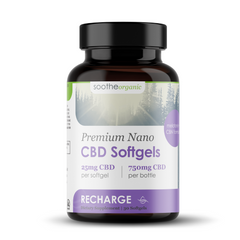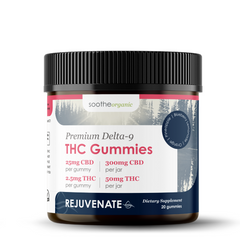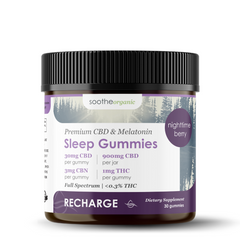In recent years, cannabidiol (CBD) has gained immense popularity as a natural alternative for managing pain, anxiety, inflammation, and various other ailments. But what exactly is CBD, and how does it work within our bodies? To comprehend this phenomenon, we must delve into the science behind CBD and the endocannabinoid system.
Cannabidiol (CBD) is a non-psychoactive compound found in cannabis plants. Unlike its well-known cousin, tetrahydrocannabinol (THC), CBD does not create a "high" feeling or any form of intoxication. Instead, it has been extensively studied for its potential therapeutic effects on numerous medical conditions.
Key Takeaways:
- CBD is a non-intoxicating compound found in cannabis plants that interacts with the endocannabinoid system (ECS), which plays a crucial role in maintaining homeostasis.
- The ECS consists of three primary components: endocannabinoids, receptors (CB1 and CB2), and enzymes that break down endocannabinoids.
- CBD interacts with the ECS by modulating CB1 and CB2 receptors, inhibiting the FAAH enzyme, activating TRPV1 receptors, and modulating other non-ECS receptors.
- Potential therapeutic applications of CBD include pain management, anxiety and depression treatment, epilepsy treatment, cancer treatment, skin condition treatment, and addiction treatment.
- The FDA has approved a CBD-based drug, Epidiolex, for treating two rare forms of epilepsy in children.
The Endocannabinoid System
To truly grasp the science behind CBD, we need to understand the endocannabinoid system (ECS). The ECS is a complex cell-signaling system found ubiquitously throughout the human body.
It plays an essential role in maintaining homeostasis – the balance of various physiological processes that keep our bodies functioning optimally.
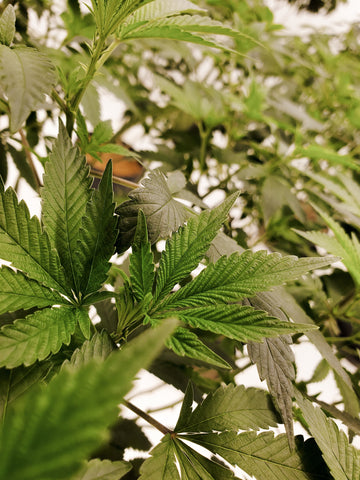
The ECS consists of three primary components:
1. Endocannabinoids: Naturally occurring compounds that are similar in structure to cannabinoids found in cannabis plants. The two main endocannabinoids are anandamide (AEA) and 2-arachidonoyl glycerol (2-AG).
2. Receptors: Proteins found on the surface of cells that receive signals from endocannabinoids and other signaling molecules. The two primary receptors in the ECS are CB1 and CB2 receptors.
CB1 receptors are mostly found in the brain, while CB2 receptors are predominantly located in the immune system and peripheral tissues.
3. Enzymes: These break down endocannabinoids once they have fulfilled their purpose. The primary enzymes involved in breaking down AEA and 2-AG are fatty acid amide hydrolase (FAAH) and monoacylglycerol lipase (MAGL), respectively.
The ECS is involved in regulating various physiological processes, including pain, mood, appetite, sleep, immune function, and inflammation. When there is an imbalance in any of these functions, the ECS kicks in to help restore homeostasis.
How CBD Interacts with the Endocannabinoid System
Here are some of the primary ways CBD interacts with the ECS:
1. Modulation of CB1 and CB2 receptors: Unlike THC, which directly binds to CB1 receptors and produces a psychoactive effect, CBD does not have a strong affinity for either CB1 or CB2 receptors. Instead, it acts as a modulator, enhancing or inhibiting the binding of other cannabinoids and endocannabinoids to these receptors.
For example, CBD can reduce the psychoactive effects of THC by inhibiting its binding to CB1 receptors. This interaction may explain why consuming CBD-rich cannabis strains can lead to a more balanced and less intoxicating experience than using strains high in THC alone.

2. Inhibition of FAAH enzyme: CBD has been shown to inhibit the FAAH enzyme responsible for breaking down anandamide (AEA). By doing so, CBD indirectly increases AEA levels in the body, leading to enhanced activation of CB1 receptors. Anandamide has been dubbed the "bliss molecule" for its role in regulating mood and promoting feelings of happiness and well-being.
3. Activation of TRPV1 receptors: CBD also interacts with transient receptor potential vanilloid 1 (TRPV1) receptors, which are involved in mediating pain, inflammation, and temperature regulation. By activating TRPV1 receptors, CBD may help alleviate pain and reduce inflammation.
4. Modulation of other non-ECS receptors: CBD has been shown to interact with various other receptors outside the ECS, such as serotonin (5-HT1A) receptors and GABA-A receptors. These interactions may contribute to CBD's potential antidepressant, anxiolytic, and anticonvulsant effects.
Potential Therapeutic Applications of CBD
Due to its interaction with the ECS and other receptor systems, CBD has been studied for a wide range of therapeutic applications. Some of the most promising areas of research include:
1. Pain management: CBD has shown promise in alleviating various types of pain, including neuropathic pain, inflammatory pain, and cancer-related pain. Its anti-inflammatory properties may also help reduce swelling and discomfort associated with conditions like arthritis.
2. Anxiety and depression: CBD has demonstrated potential for dealing with anxiety and depression by modulating serotonin levels in the brain.
3. Epilepsy: The FDA approved Epidiolex, a CBD-based drug, for treating two rare forms of epilepsy in children – Lennox-Gastaut syndrome and Dravet syndrome. CBD has been shown to reduce seizure frequency and severity in these conditions.
4. Cancer: Preliminary studies suggest that CBD may help inhibit the growth of cancer cells, promote apoptosis (cell death), and prevent the spread of cancer to other parts of the body.
5. Skin conditions: Due to its anti-inflammatory properties, CBD has been explored for dealing with skin conditions such as acne, psoriasis, and eczema.
6. Addiction treatment: CBD has shown potential in reducing cravings and withdrawal symptoms associated with substance use disorders, including nicotine, opioids, and alcohol.
Conclusion
The science behind CBD and its interaction with the endocannabinoid system reveals a complex relationship that holds significant potential for therapeutic applications. As research on CBD continues to grow, we can expect a deeper understanding of its mechanisms and further advancements in harnessing its potential to improve health and well-being.
However, it is essential to consult with a healthcare professional before using CBD to ensure it is safe and appropriate for your specific needs. Additionally, as regulations surrounding CBD products vary, it is crucial to choose high-quality products from reputable sources to achieve the desired effects.
The recognition of CBD's potential benefits has led to increased interest and investment in research. As scientists continue to uncover the intricacies of the endocannabinoid system and the role of CBD in modulating its functions, we can anticipate a more comprehensive understanding of this promising compound. The future may hold new discoveries that could revolutionize our approach to managing various health conditions.
usda organic, cbd best sleep gummies, best thcv gummies, focus gummies, 1000mg cbd, 750mg gummies, muscle rub, cbd cream 1000mg, healing salve, vegan gummies cbg tincture, is cbd legal in wyoming, best cbd casper, cbd gummies casper, thcv gummies casper, cbd tinctures wyoming, delta 9 gummies wyomin, best cbd softgels Wyoming

